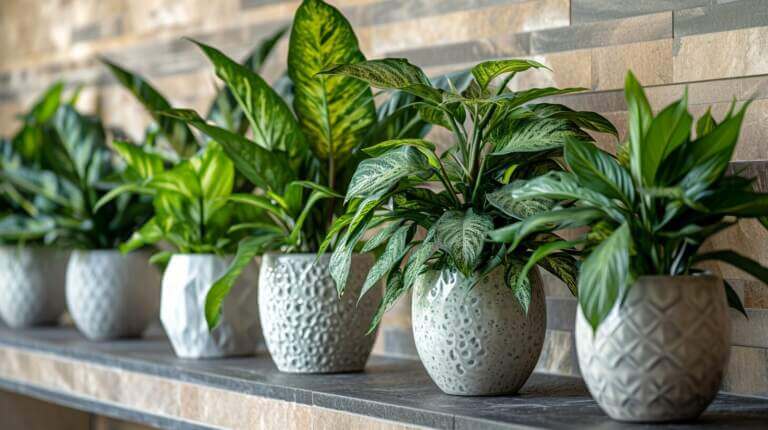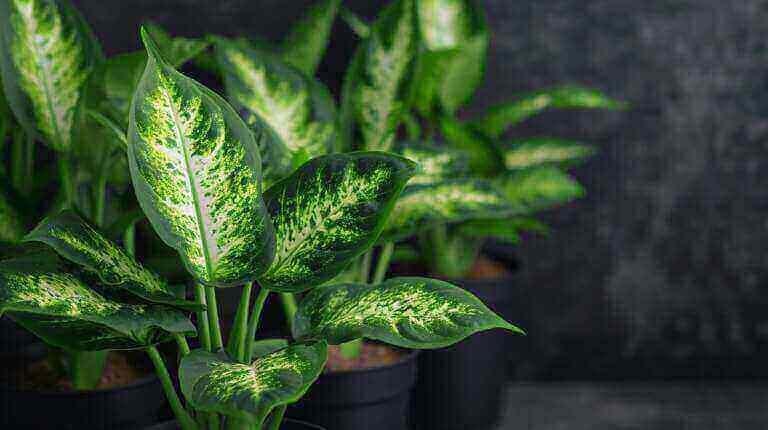Why Does My Chinese Money Plant Leaves Turn Yellow? Fixes for Pilea Peperomioides Leaf Discoloration
If you’ve noticed that the leaves of your Pilea peperomioides are turning yellow, you may be wondering what’s causing this issue. Yellowing leaves can be a common occurrence with Pileas, but it’s important to understand the underlying reasons and how to address them.
Key Takeaways:
- Yellowing leaves on Pilea peperomioides can be caused by factors such as overwatering, inadequate drainage, and nutrient deficiencies.
- Light and heat stress, as well as insect infestations, can also lead to yellowing and drooping leaves.
- To fix leaf discoloration, allow your Pilea to dry out, adjust your watering routine, and provide proper drainage.
- Consider using a high-nitrogen or high-potassium fertilizer to address nutrient deficiencies.
- Maintain appropriate light and temperature conditions, and treat any insect infestations using suitable methods.
Common Causes and Remedies for Yellow Leaves on Pilea Peperomioides
If you’ve noticed that the leaves of your Pilea peperomioides are turning yellow, it’s important to identify the underlying causes and take appropriate action to remedy the issue. Yellow leaves can be a sign of various common problems, including overwatering, nutrient deficiencies, lighting issues, and insect infestations.
One of the most common causes of yellowing leaves in Pilea plants is overwatering. When the roots are consistently saturated, they can become waterlogged and develop rot, leading to yellowing leaves. To address this, allow your Pilea to dry out between waterings and adjust your watering schedule accordingly. Ensure that your pot has proper drainage holes and use well-draining soil to prevent excess moisture.
Nutrient deficiencies can also contribute to yellow leaves. Pilea plants require a balanced supply of nutrients, particularly nitrogen and potassium. If these nutrients are lacking, the bottom leaves may turn yellow. Consider using a high-nitrogen or high-potassium fertilizer to address these deficiencies and promote healthy leaf growth.
Lighting issues can also cause yellowing leaves in Pilea peperomioides. These plants thrive in bright, indirect light. Placing them in direct sunlight can lead to leaf burn and yellowing. Ensure that your Pilea is placed in a location with appropriate lighting conditions to prevent this issue.
Pilea Peperomioides Yellow Leaves: Common Causes and Remedies
| Causes | Remedies |
|---|---|
| Overwatering | Allow the plant to dry out between waterings and ensure proper drainage. |
| Nutrient deficiencies | Use a high-nitrogen or high-potassium fertilizer to address deficiencies. |
| Lighting issues | Place the plant in a location with bright, indirect light. |
| Insect infestations | Treat any pest infestations with appropriate methods. |
Dealing with Leaf Spots and Curling on Pilea Peperomioides
If you notice that the leaves of your Pilea peperomioides are curling or developing spots, it’s important to address these issues promptly to ensure the health of your plant. Curling leaves can be a result of overwatering or underwatering, as well as excessive heat or insufficient light. Older leaves are more prone to curling as they naturally age. On the other hand, spots on the leaves can indicate various problems, including mineral deposits, fungal issues, sunburn, or pest infestations.
To alleviate curling leaves, adjust your watering routine by allowing the soil to dry out between waterings. This will help prevent overwatering or underwatering. Ensure your Pilea receives bright but indirect light, as placing it in direct sunlight can lead to leaf burn and curling. If you notice curled bottom leaves, it may be a sign of excess water in the soil, so adjust your watering schedule accordingly and ensure proper drainage.
In the case of leaf spots, white spots are typically harmless mineral deposits and do not require treatment. However, if you notice brown spots on your Pilea’s leaves, it could be due to fungal issues, sunburn, or pests. To address these problems, provide your Pilea with appropriate light conditions and ensure proper airflow around the plant. If necessary, treat any fungal issues or pest infestations with suitable methods, such as fungicides or insecticidal soaps. Additionally, consider checking the nutrient levels of your soil and addressing any deficiencies to promote healthy leaf growth.
Overall, maintaining a healthy environment for your Pilea peperomioides is key to preventing leaf spots and curling. Provide the plant with bright indirect light, proper watering, and well-draining soil. Monitor the humidity levels and airflow around the plant to prevent fungal issues. By addressing these factors, you can help your Pilea thrive and maintain its beautiful foliage.
Table: Comparison of Leaf Spots and Curling Causes
| Issue | Causes | Solutions |
|---|---|---|
| Leaf Curling |
|
|
| Leaf Spots |
|
|
Tips for Proper Care and Maintenance of Pilea Peperomioides
When it comes to caring for your Pilea peperomioides, there are a few key factors to keep in mind to ensure its health and longevity. Let’s explore some tips for proper care and maintenance:
Water:
It’s important to strike a balance with watering your Pilea. Allow the soil to dry out between waterings to prevent overwatering, as this can lead to root rot. Aim for a thorough watering and then let the soil dry out partially before watering again.
Light:
Pileas prefer bright, indirect light. Ideally, place your plant near a north or east-facing window to provide the right amount of light. Avoid direct sunlight, as it can scorch the leaves. Consistent exposure to indirect light will keep your Pilea thriving.
Repotting:
If your Pilea has outgrown its current pot or if the soil isn’t draining properly, it may be time to repot. Choose a pot with drainage holes and well-draining soil to promote healthy root growth. When repotting, gently loosen the roots and replant in fresh soil.
Fertilize:
Pileas benefit from regular fertilization. Use a general houseplant or tropical plant fertilizer according to the instructions on the packaging. This will provide your Pilea with the necessary nutrients for growth and vibrant foliage.
Humidity:
Pileas appreciate moderate humidity levels. You can increase humidity by misting the leaves regularly or placing a humidifier nearby. This will help create a comfortable environment for your plant.
FAQ
Why are my Pilea leaves turning yellow?
Yellow leaves on your Pilea plant can be a common problem and it’s often caused by overwatering. When the plant receives too much water, the leaves may start to turn yellow. It’s important to water your Pilea only when the top of the soil is dry.
What causes curling leaves on a Chinese Money Plant?
Curling leaves on a Chinese Money Plant, also known as Pilea Peperomioides, can indicate that the plant is not getting enough light. Bright indirect light is ideal for this plant. Direct sunlight can cause the leaves to curl and develop brown spots.
How do I fix drooping leaves on my Pilea plant?
Drooping leaves are often a sign of overwatering or underwatering. Check if the soil is dry or if there’s excess water at the bottom of the pot. Adjust your watering schedule accordingly to keep the plant healthy.
Why are the older leaves on my Pilea turning yellow?
It’s natural for the older leaves at the bottom of your Pilea to turn yellow and fall off as the plant grows. This is part of the plant’s natural growth cycle. If the yellowing is excessive, it could be a sign of overwatering or nutrient deficiencies.
Why are the leaves on my Pilea curling inward?
Leaves curling inward can be a sign that your Pilea is getting too much light. Move the plant to a location with bright, indirect light to prevent the leaves from curling.
How do I prevent brown spots on the leaves of my Pilea?
Brown spots on the leaves can indicate a few possible causes including too much direct light, over-fertilization, or a pest infestation. Make sure your plant is getting the right amount of light, not over-fertilized, and check regularly for pests.
Why is my new Pilea growth turning yellow?
New growth turning yellow can be a sign of overwatering or nutrient deficiencies. Make sure you’re not giving your Pilea too much water and that it’s getting enough nutrients from the soil or fertilizer.







